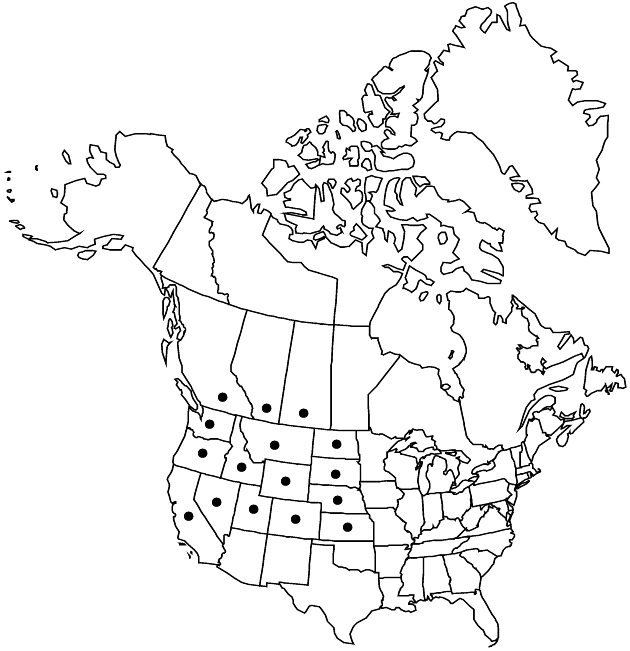Erigeron pumilus
Gen. N. Amer. Pl. 2: 147. 1818.
Perennials, 5–30(–50) cm; taprooted, caudices with relatively short and thick branches. Stems erect, hirsute to hispido-hirsute (often with slightly deflexed hairs), minutely to stipitate glandular. Leaves basal (persistent) and cauline (petioles prominently ciliate, hairs thick-based, spreading); basal blades oblanceolate to narrowly oblanceolate, 20–80 × 1–4(–5) mm, margins entire, faces hispid to hispido-hirsute, little, if at all, glandular; cauline on distal 1/2–3/4 of stems, blades becoming linear-lanceolate, little reduced distally. Heads 1–5(–50). Involucres 4–7 × 7–15 mm. Phyllaries in 2–4 series (midvein region orange to yellowish), hirsute to hispido-hirsute, minutely glandular. Ray florets 50–100; corollas white to pink, less commonly bluish, 6–15 mm, laminae reflexing. Disc corollas 3–5 mm (throats distinctly indurate and inflated, glabrous or sparsely puberulent with glandular-viscid, hairs blunt). Cypselae 1.4–1.8 mm, 2-nerved, faces sparsely strigose; pappi: outer of setae or subulate scales (0.1–0.3 mm), inner of 12–27 bristles.
Distribution

w North America.
Discussion
Varieties 2 (2 in the flora).
Selected References
None.
Key
| 1 | Pappi: outer of coarse bristles or setiform scales, inner of 12–20 bristles; rays usually pink, sometimes white; indurate portion of disc corollas relatively dull, glabrous or slightly puberulent | Erigeron pumilus var. intermedius |
| 1 | Pappi: outer of inconspicuous, well-developed setae, inner of 15–27 bristles; rays white; indurate portion of disc corollas shiny, glabrous | Erigeron pumilus var. pumilus |